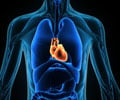Obese people with high levels of abdominal fat and liver fat may face increased risks for heart disease and other serious health problems.

Researchers in Sweden and Finland found that obese people at the highest risk have increased secretion of liver lipids, more abdominal fat and impaired removal of triglycerides from the blood stream. As such, doctors should routinely check obese patients for intra-abdominal obesity and indications of liver fat, researchers said.
"It is important to recognize that measuring abdominal fat and liver fat can identify the patients at high risk for metabolic abnormalities and heart disease," said Jan Boren, M.D., Ph.D., study senior author and professor of molecular and clinical medicine at the University of Gothenburg in Sweden. "Such exams are important because up to 20 percent of the obese appear to be "metabolically normal."
The researchers investigated what makes some obese people develop lipid disorders. They found that liver fat is strongly associated with increased secretion of very-low-density lipoproteins (VLDL), which contain the highest amount of triglycerides. High levels of triglycerides carry an increased risk of metabolic abnormalities and increased risk of heart disease and premature death.
"Increased liver fat is dangerous, as it is linked with many known heart disease risk factors," said Marja-Riitta Taskinen, M.D., Ph.D. study co-author and professor of medicine at the University of Helsinki in Finland. "Lifestyle modifications such as exercise and weight loss can reduce liver fat and the secretion of lipoproteins."
In the study, middle-aged Caucasian Finnish men were divided into three groups: 14 obese men had high triglycerides; 14 obese men had normal triglycerides and 10 men who were not obese and had normal triglycerides served as controls. The obese men's average age was 52 to 55 years. The non-obese men's average age was 48 years.
Advertisement
The results showed that triglyceride levels in the obese men were higher as a result of the increased secretion coupled with severely impaired clearance of triglyceride-rich VLDL particles. Researchers also found:
- The obese men with elevated triglycerides had a liver fat content of 13 percent.
- The obese men with normal triglycerides had a 6.9 percent liver fat content.
- The non-obese men had a 2.9 percent liver fat content.
Advertisement
Source-Eurekalert















